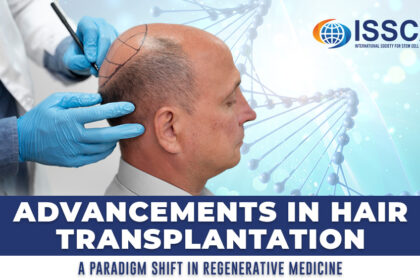
WEDNESDAY, 09 AUGUST 2023 / PUBLISHED IN BLOG
In the realm of regenerative medicine, hair transplantation has experienced remarkable progress in recent years. As part of a multidisciplinary community of physicians and scientists dedicated to advancing the field, it is essential to stay informed about the latest developments in this area. This blog post aims to provide a comprehensive overview of the cutting-edge advancements in hair transplantation, highlighting the convergence of science, technology, and practice.
Tissue Engineering in Hair Transplantation
The integration of tissue engineering principles into hair transplantation has opened new avenues for regenerative medicine. Scientists are actively exploring the use of biomaterials, growth factors, and scaffolds to create an optimal environment for transplanted hair follicles. By nurturing follicular cells, tissue engineering techniques hold immense potential in enhancing transplantation outcomes and promoting tissue regeneration.
Stem Cell-Based Approaches
Stem cell therapy has emerged as a promising strategy within the realm of hair transplantation. Researchers are investigating the utilization of mesenchymal stem cells (MSCs) and adipose-derived stem cells (ADSCs) to stimulate hair follicle regeneration. These unique regenerative cells promote hair growth and significantly enhance the success rate of transplantation procedures. Ongoing research in stem cell-based therapies continues to unveil their potential to revolutionize hair restoration techniques.
Gene Therapy for Hair Loss
Gene therapy is gaining traction as a cutting-edge approach to addressing hair loss at its core. Scientists aim to develop innovative treatments for both genetic and acquired forms of hair loss by manipulating genes involved in hair growth and regulation. Techniques such as CRISPR-Cas9 gene editing hold immense potential for altering gene expression associated with hair follicle development, offering personalized regenerative therapies.
Nanotechnology in Hair Transplantation
Nanotechnology has paved the way for groundbreaking advancements in hair transplantation. Researchers are exploring the application of nanomaterials and nanoparticles to enhance the targeted delivery of growth factors, drugs, and stem cells directly to the hair follicles. This precise and controlled release optimizes the regenerative potential of transplanted hair follicles, leading to improved treatment outcomes and faster healing.
Artificial Intelligence (AI) and Machine Learning
The integration of AI and machine learning algorithms has transformed various medical fields, including hair transplantation. AI-powered technologies assist in precise hair follicle extraction, optimizing graft placement, and predicting post-transplant outcomes. By analyzing vast datasets and patterns, AI algorithms enhance decision-making, improve surgical techniques, and contribute to personalized treatment plans in hair transplantation.
As active contributors to the advancement of regenerative medicine, staying informed about the latest developments in hair transplantation is crucial. Tissue engineering, stem cell-based approaches, gene therapy, nanotechnology, and the integration of AI and machine learning are reshaping the landscape of hair restoration. By remaining at the forefront of these advancements, physicians and scientists can harness the power of regenerative medicine to effectively treat hair loss and alleviate human suffering.
Join us at issca.us and let us continue to collaborate, innovate, and explore the limitless potential of regenerative therapies.




